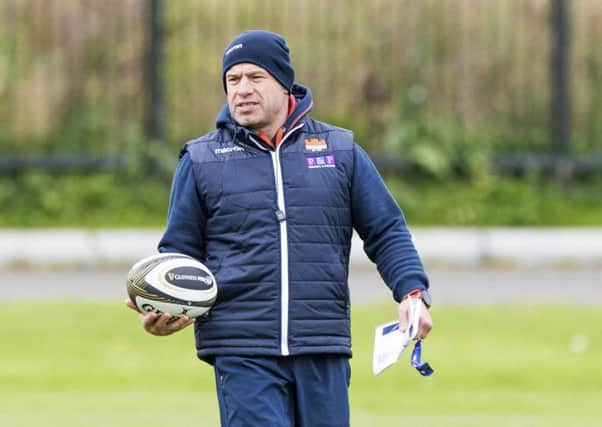Post-tackle laws need review as result of increase in two-person tackling


So when Dave Rennie said last week after Glasgow’s too-often stuttering win against the Dragons, that his team “have a long way to go to put in a display that would challenge Saracens” at Scotstoun on 14 October in the opening match of their European campaign, his players had better believe him. Their performance against the Dragons was sort of okay, but sort of okay will be nowhere like good enough against the English club.
And note: he said “challenge” – only challenge – not beat.
I would suppose that Richard Cockerill is delivering much the same message to his Edinburgh men. They scored some lovely tries against Benetton last week, but their defence was shocking, almost as bad as Glasgow’s had been against the Southern Kings.
Advertisement
Hide AdAdvertisement
Hide AdGlasgow had at least the somewhat tattered excuse that they were away south of the Equator in Port Elizabeth. Edinburgh, however, were at home and, if Benneton’s tries had been converted, would have lost, and lost deservedly. Missed tackles cost matches.
Tackling is very much the subject of the week with Europe Rugby insisting that high tackles and contact with the head will not be tolerated. There was a meeting of top referees this week at which policing of dangerous tackles was high on the agenda.
Meanwhile, Simon Halliday, the former England centre who is now Europe Rugby’s chairman, implied that no excuses will be considered valid. “A 6 ft 7in forward can bend to make a tackle,”he said. “It’s a matter of choice, and I think it is disingenuous to say it isn’t.”
This is doubtless true enough, but it might be helpful to consider why tackling round the chest, neck or even, if by mistake, the head is so much more common than it used to be, the classic low tackle, round the hips, knees or even ankles, so much rarer. After all it used to be common to see tacklers off their feet or at least with only one foot grounded, and with arms extended as they made the tackle. Not often now.
Of course one should make a couple of points in extenuation. First, more tackles have to be made now than ever used to be the case, as the team in possession seek to play phase after phase in the hope that eventually a gap will appear in the defence. Second, there are more tackles in congested areas of the field, tackles of ball-carriers running hard and directly at the would-be tackler.
Bending to make the tackle may indeed be possible, but not bending isn’t really, whatever Mr Halliday says, always a matter of choice.
A few minutes watching any closely-contested match makes this clear. Sometimes there may be no alternative to going high. Sometimes too – quite often really – you see the ball-carrier running with his head lower than his hips straight and hard at an opponent.
Moreover, the two-person tackle – one going low, the other round the chest, to prevent an off-load from being made, has become common.
Advertisement
Hide AdAdvertisement
Hide AdIf the timing isn’t precise, then the low tackler may be bringing his man down as his team-mate going for the chest comes in. Consequently the chest will be lower than expected with the result that the second tackler makes unintended, but still dangerous, contact with the head.
I don’t see this can be avoided, for it is not reasonable to decree that, in all circumstances, only one man may tackle the ball-carrier.
It may be that the authorities should be looking at the laws relating to what happens after the tackle. At present if the tackled player can’t ground the ball, any scrum goes to the tackling side.
This obviously gives them an incentive to tackle high in an attempt to prevent release and smother the ball.
Meanwhile, if the legislators want to encourage low tackling, they should consider making it illegal for the tackled player to readjust his position on the ground, and require him to release the ball immediately he is brought down. They might also consider reverting to the law which permitted the tackler to play the ball, once released, even if he is on the “wrong” side of the ball.
Finally, while one is pleased to see this insistence on penalising high tackles, it is strange to see what appears to be frequent illegality permitted at the breakdown and the laxity with which violent and dangerous “taking out” of players well away from the ball is treated.
Yet this sort of taking-out may be more dangerous than many high tackles .The ball-carrier is at risk of being legally on the receiving end of a hard tackle which may turn out to be high and dangerous; the player violently “taken out “ at the breakdown is always the victim of dangerous illegality which too often goes unpunished.